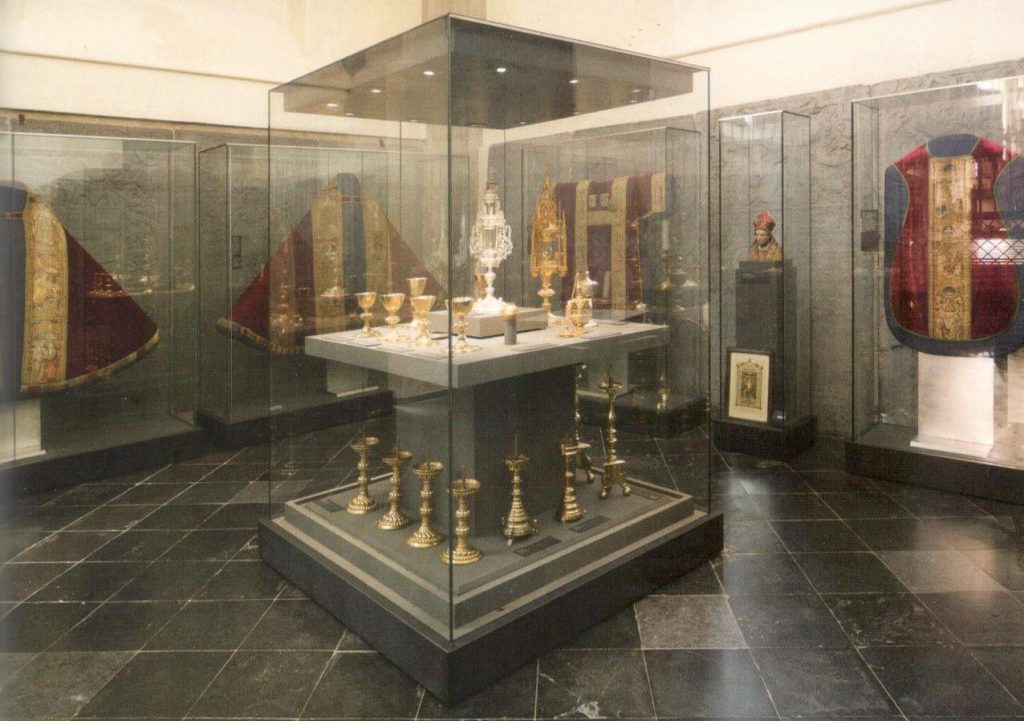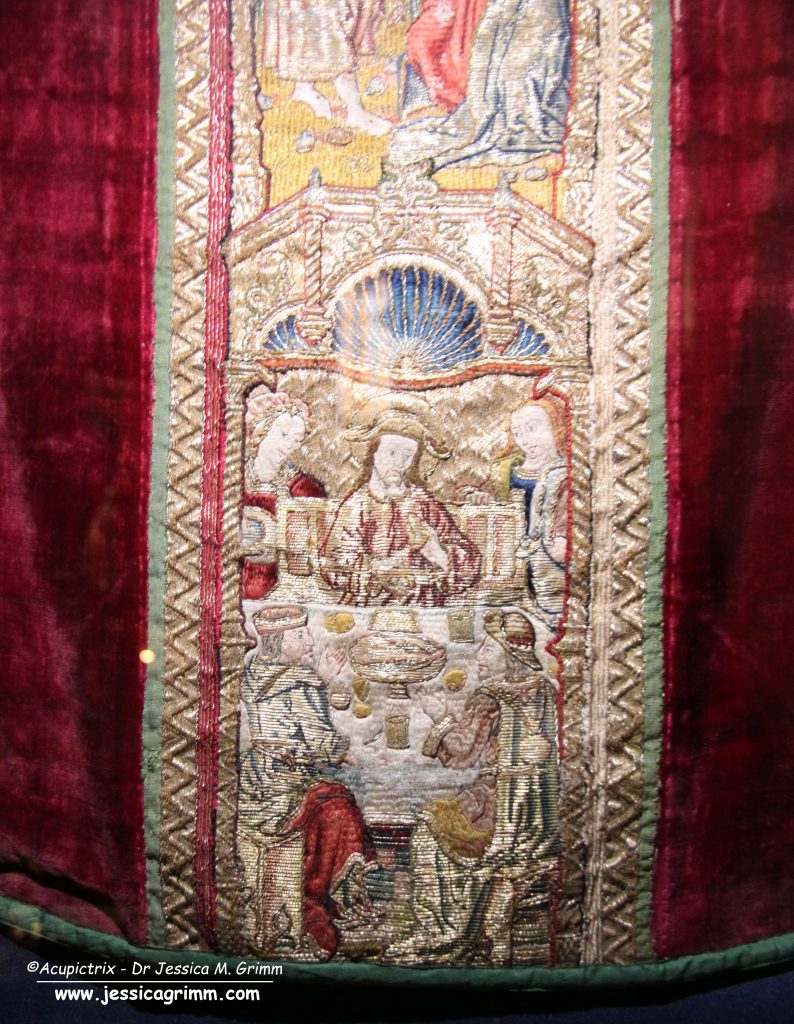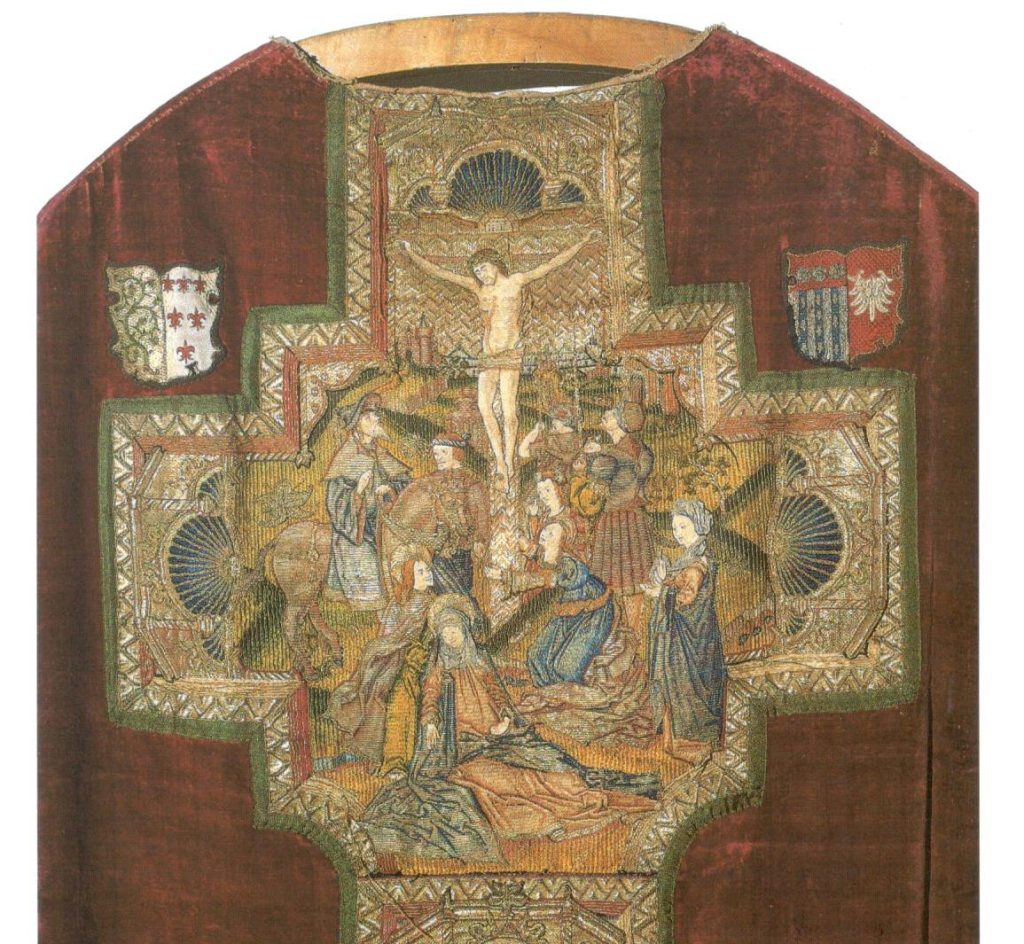Last year, I visited the St Nicolai Church in Kalkar, Germany. Kalkar was an important and wealthy city in the late medieval period. It was never very large, but with proud inhabitants who used their monetary power to decorate the place beautifully. Although no longer influential from the 17th century onwards, and even reverting to city farming (think Detroit!) until well into the 19th century, Kalkar is well worth a visit. Especially as the St Nicolai Church has one of the most comprehensive church treasures still in its original place, and among it, are four spectacularly embroidered late medieval vestments made in the Low Countries. These medieval vestments enhance the many beautiful altarpieces with their paintings and sculptures. You can really see that they form a unity. Think of them in 2-D, and you have an embroidery pattern.

The church inventory lists more than 100 vestments in AD 1543. Many of which were donated by important Kalkar families. Today, four of these medieval vestments are displayed in the church treasury. You will need to visit on a sunny day as natural light is the only light source for these beauties. All four vestments are made of red velvet and decorated with the typical orphreys seen in the Low Countries. On display are: two copes, a dalmatic and a chasuble. We will explore the chasuble in this blog post.

The chasuble is a testament to the rich cultural heritage of the Northern Netherlands. Its beautifully embroidered orphreys, crafted around AD 1525, are a sight to behold. This chasuble, mentioned in the church inventory of AD 1543, was a generous donation by Wolter van Riswick in AD 1530. Wolter, hailing from a wealthy family, along with his brothers, contributed significantly to this church and the one in nearby Xanten. The front of the chasuble features an embroidered column with three scenes: the women visiting the grave, Noli me tangere, and the road to Emmaus appearance.

Although the front of the chasuble is currently on display, the back shows a most elaborate scene of the Crucifixion, followed by the burial of Jesus and the Resurrection. The embroidery is exquisite, and many techniques are used. There’s finely shaded or nue for the clothing of most of the figures. Diaper couching behind the crucified Christ, as well as on the beams forming the cross. The landscape is mainly made up of Italian Stitch/Couching (laid silk couched down with a single gold thread). String padding forming a zig-zag pattern with the dots has been applied as an orphrey frame. The blue scallops are also intricately stitched by recombining and twisting gold threads that come from the regular couching further up. All in all, this was a costly piece of embroidery executed by one of the leading embroidery ateliers in the Northern Netherlands.
Literature
Werd, G. de, 2016. St. Nicolaikirche Kalkar, Deutscher Kunstverlag Berlin München.
